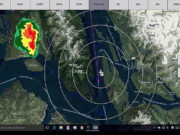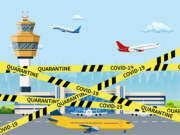About 7.8 billion passengers will travel by air in 2036, nearly double the 4 billion expected to fly this year, the International Air Transport Association (IATA) says.
The projection, released Tuesday, is based on data included in an update of IATA’s “20-Year Air Passenger Forecast.”
“All indicators lead to growing demand for global connectivity,” said IATA Director General and CEO Alexandre de Juniac. “It’s fantastic news for innovation and prosperity, which is driven by air links. It is also a huge challenge for governments and industry to ensure we can successfully meet this essential demand.”
The projections call for the greatest growth in the Asia-Pacific region, which IATA said would provide more than half of all new passengers. Increased travel in China, coupled with slightly reduced growth in the United States, will make China the world’s largest aviation market (including traffic to, from and within the country) by 2022, the report said. The United States is expected to slip to second place, IATA said.
“The U.K. will fall to fifth place, surpassed by India in 2025 and Indonesia in 2026,” the report added. “Thailand and Turkey will enter the top 10 largest markets, while France and Italy will fall in the rankings to 11th and 12th, respectively.”
To prepare for the increase in passengers, the aviation industry must strengthen its partnerships with communities and governments, IATA said, adding that those partnerships will need to work to upgrade existing infrastructure and expand facilities.
“Runways, terminals and ground access to airports will come under increasing strain,” IATA said. “Innovative solutions to these challenges, as well as to the baggage and security processes, cargo handling and other activities, will also be needed. And air traffic management needs urgent reform to cut delays, costs and emissions.”
De Juniac added, “Increasing demand will bring a significant infrastructure challenge. The solution does not lie in more complex processes or building bigger and bigger airports but in harnessing the power to new technology to move activity off-airport, streamline processes and improve efficiency.”


Commentary, News
Q&A with IATA SVP Safety and Flight Operations Gilberto López Meyer
Gilberto López Meyer joined the International Air Transport Association (IATA) as senior vice president of…
by FSF Editorial Staff